Green Lasers
Definition: lasers emitting in the green spectral region
More general term: visible lasers
German: grüne Laser
Category:  laser devices and laser physics
laser devices and laser physics
Author: Dr. Rüdiger Paschotta
Cite the article using its DOI: https://doi.org/10.61835/lcy
Get citation code: Endnote (RIS) BibTex plain textHTML
This article concerns lasers emitting in the green spectral region, i.e., with a wavelength roughly around 510–570 nm. The choice of laser gain media for such wavelengths is limited, and the performance achievable is typically not as good as e.g. in the infrared spectral region. Nevertheless, green-emitting lasers of various kinds belong to the most often used visible lasers. Some of them are based on nonlinear frequency conversion, namely frequency doubling.
Types of Green Lasers
There are many types of green lasers, which differ substantially e.g. in terms of output power, pulse format and cost:
- Argon ion lasers, based on amplification in an argon plasma (made with an electrical discharge), are fairly powerful light sources for various wavelengths. The highest power can be achieved in green light at 514.5 nm. It can exceed 20 W, but the power efficiency of such lasers is very poor, so that tens of kilowatts of electric power are required for multi-watt green output, and the cooling system has corresponding dimensions. There are smaller tubes for air-cooled argon lasers, requiring hundreds of watts for generating some tens of milliwatts. The beam quality can be close to diffraction-limited.
- Helium–neon lasers are most well known as red lasers, but they can also be made to emit a few milliwatts at 543.5 nm.
- Copper vapor lasers can emit relatively high powers at 510.6 nm. They are based on a pulsed discharge in copper vapor and emit nanosecond pulses.
- Green laser diodes (or other green semiconductor lasers) are difficult to produce – even more difficult than blue ones. They can emit only a few milliwatts and have relatively short lifetimes, compared with other laser diodes [5]. However, there has been encouraging progress recently [10, 11].
- Erbium-doped upconversion lasers based on erbium-doped fibers or bulk crystals can emit around 550 nm, typically with some tens of milliwatts of output power and with high beam quality.
- Praseodymium-doped lasers can emit green light (e.g., Pr3+:YLF at 523 nm), apart from light at various other wavelength. They can be pumped with blue light from laser diodes, for example.

- There are various types of frequency-doubled solid-state lasers, where the actual laser emits in the 1-μm spectral region and a frequency doubler (based on a nonlinear crystal material such as LiNbO3, LBO or KTP) converts this radiation into green light. The frequency doubling process can take place either outside the laser or within the resonator. Most common is an output wavelength of 532 nm, obtained by doubling 1064-nm radiation from a neodymium-doped 1064-nm Nd:YAG laser or Nd:YVO4 laser, and 515 nm from doubling the output of a 1030-nm Yb:YAG laser. Figure 1 shows an example. Output powers of multiple watts can be easily obtained, even with single-frequency operation and high beam quality. Hundreds of watts of green light are generated with some high-power lasers. Fiber lasers are also interesting sources, in particular when their ability to produce somewhat different wavelengths is relevant. For smaller powers, frequency-doubled microchip lasers or laser diodes (e.g. for green laser pointers) can be used (sometimes with pulsed pumping or with a semiconductor optical amplifier for increased power efficiency of the frequency doubler).
- High-power optically pumped VECSELs are also very attractive laser sources for frequency doubling with several watts or even tens of watts of output power [8]. For lower powers, semiconductor DFB lasers can be used. Note that other kinds of semiconductor lasers, such as broad area laser diodes, are less suitable for frequency doubling due to a typically broader linewidth and poor beam quality.
- There are dye lasers which can be operated in the green spectral region with wide tunability.

Applications
Green lasers are used e.g. as laser pointers, for laser projection displays (as part of RGB sources), for printing, in interferometers, bioinstrumentation, medical scanning, and for pumping of solid-state lasers (e.g. titanium–sapphire lasers).
In laser material processing, green lasers (when compared with near-infrared lasers) can bring benefits via a much higher absorption coefficient e.g. in copper, gold, or silicon. That way, one can work with substantially less laser power, and the processing results are also often substantially better in terms of quality. Therefore, the substantially higher cost per watt is often well justified.
More to Learn
Encyclopedia articles:
Blog articles:
- The Photonics Spotlight 2006-12-16
- The Photonics Spotlight 2009-04-06
- The Photonics Spotlight 2009-04-17
Suppliers
The RP Photonics Buyer's Guide contains 130 suppliers for green lasers. Among them:

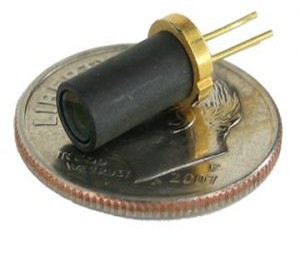
Advanced Photonic Sciences
APS offers the MicroGreen™ Series, which is a diode-pumped solid-state laser packaged in a 5.6 mm diameter can. The MicroGreen is available in power ratings up to 80 mW in TEM00 mode. The alignment-free optical design is also both rugged and reliable; and its high optical-to-optical conversion efficiency allows the laser to be battery powered. Applications include tool alignment, machine vision, aiming guide, and the green color source in micro-displays.


RPMC Lasers
Serving North America, RPMC Lasers offers a wide range of green laser diodes and green DPSS lasers. We offer pulsed and CW lasers and modules, including single emitters, laser diode & line modules, HeNe lasers, CW & pulsed DPSS lasers, ultrafast lasers, microchip lasers, MIL-spec lasers, and more, with output powers from 500 µW up to 50 W, with packaging options for all levels of integration from TO can through turnkey systems. Standard and custom options available. Let RPMC help you find the right laser today!


Teem Photonics
The ANG-10E-100 laser, based on a MOFA architecture, emits 0.5-ns pulses at 532 nm with 70 kHz repetition rate and an average power around 800 mW.
Compact models of the passively Q-switched range, such as the SNG-40F-1x0 laser, with average output powers between 15 mW and 100 mW and different pulse repetition rates.
Triggered lasers include the STG-03E-1x0 laser, a short pulse laser available also with green output.


TOPTICA Photonics
Nonlinear frequency conversion techniques access wavelengths that cannot be generated directly from laser diode technology. Via second or fourth harmonic generation, TOPTICA laser systems can access the UV, blue, green, yellow and orange spectral ranges at high powers. TOPTICA offers tunable, single-frequency systems at virtually any wavelength between 190 nm and 780 nm, employing ultrastable seed lasers, power amplification in semiconductor or fiber amplifiers, and a proprietary bow-tie cavity design – all in established pro technology.

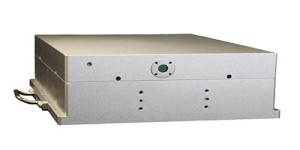
AdValue Photonics
AdValue Photonics offers the EVERESTpico green picosecond laser for applications like laser cutting, drilling and scribing on various materials. Different models can deliver 50-ps pulses with up to 30 W average power and excellent beam quality.


Integrated Optics
MatchBox lineup is strengthened with a wide selection of DPSS green lasers. They come in various output power levels, output types, both in regular and narrow spectrum options. Particular, our MM/SM or PM fiber coupled versions could simplify each set-up. Fiber coupling is realized inside the sealed housing and temperature stabilized. Green MatchBox lasers feature attractive beam quality and side-mode-suppression ratio values. They are perfect for your Raman applications.

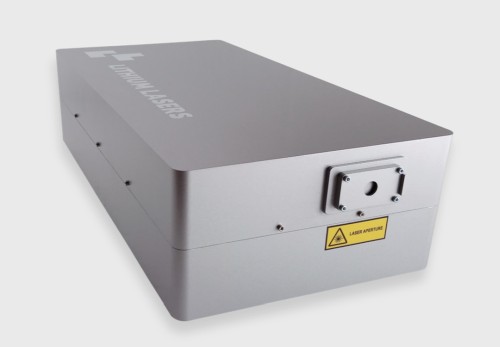
Lithium Lasers
Lithium Lasers offers Lithium Six 525, a cost-effective and compact green laser with average powers up to 3.5 watts. Lithium Six 525 is a frequency-doubled green laser that emits femtosecond soliton pulses with unbeatable spatial and temporal quality. This laser is available with repetition rate from 220 to 80 MHz.


Edmund Optics
Edmund Optics offers different kinds of green lasers, including argon-ion lasers, diode lasers and diode-pumped solid-state lasers.


HÜBNER Photonics
HÜBNER Photonics offer green diode pumped lasers (DPLs) emitting at 532 nm. They exhibit single longitudinal mode operation with very low noise and excellent power stability and come with a 24-months warranty.


Lumibird
Lumibird manufactures green lasers obtained by frequency doubling process, both on our pulsed fiber lasers and on our pulsed nanosecond solid-state lasers.


MPB Communications
Our green fiber lasers are available with emission wavelengths from 514 nm to 560 nm with output powers ranging from 200 mW to 5 W. For users requiring more flexibility, MPBC’s 2RU-VFL-P-488/515 Duet series is the ultimate choice offering 488 nm and 515 nm outputs in a compact cost-efficient package.
The lasers are air-cooled and available in either an OEM compact package or a 2RU rack-mountable package with an integrated power supply. They are controlled through a user-friendly graphical user interface for ease of setup and operation. MPBC's fiber lasers are renowned for their beam quality (M2 < 1.1), high reliability (with lasers in the field accumulating plus 50,000 hours) and unsurpassed wavelength and power stability.
Applications of our green lasers include microscopy, genomics, holography, optogenomics, DNA/RNA etc.


Frankfurt Laser Company
Frankfurt Laser Company offers green laser diodes with emission wavelengths from 500 nm to 570 nm.

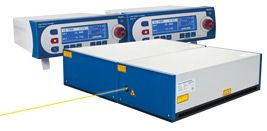
Sacher Lasertechnik
Sacher Lasertechnik has developed a frequency-doubled laser system where a resonant cavity including a frequency doubler crystal is pumped via a tunable diode laser. Depending on the required SHG power, the tunable diode laser is either a high power external cavity laser, or a two stage Master Oscillator Power Amplifier System. The covered wavelength regime ranges from 365 nm up to 540 nm.


CNI Laser
CNI offers different kinds of green lasers, including both diode lasers and diode-pumped solid-state lasers:
- Green diode lasers are available with wavelengths of 505 nm, 510 nm, 514.5 nm and 520 nm.
- Pulsed solid-state green lasers offer a narrow pulse width of <0.8 ns and pulse energies >450 mJ. We also have high-power versions with >200 W, highly stabilized lasers with <0.1% stability and <0.25% RIN, and single longitudinal mode green lasers with a line width <0.00001 nm.
Our green lasers are widely used in holographic photography, PIV particle velocity, Raman spectra, Lidar and other fields.
Bibliography
| [1] | A. J. Silversmith et al., “Green infrared-pumped erbium upconversion laser”, Appl. Phys. Lett. 51, 1977 (1987); https://doi.org/10.1063/1.98316 |
| [2] | F. Tong et al., “551 nm diode-laser-pumped upconversion laser”, Electron. Lett. 25, 1389 (1989); https://doi.org/10.1049/el:19890930 |
| [3] | T. Hebert et al., “Blue and green CW upconversion lasing in Er:YLiF4”, Appl. Phys. Lett. 57, 1727 (1990); https://doi.org/10.1063/1.104048 |
| [4] | T. J. Whitley et al., “Upconversion pumped green lasing in erbium doped fluorozirconate fibre”, Electron. Lett. 27 (20), 1785 (1991); https://doi.org/10.1049/el:19911110 |
| [5] | E. Kato et al., “Significant progress in II-VI blue-green laser diode lifetime”, Electron. Lett. 34, 282 (1998); https://doi.org/10.1049/el:19980229 |
| [6] | L. McDonagh and R. Wallenstein, “Low-noise 62 W CW intracavity-doubled TEM00 Nd:YVO4 green laser pumped at 888 nm”, Opt. Lett. 32 (7), 802 (2007); https://doi.org/10.1364/OL.32.000802 |
| [7] | C. Stolzenburg et al., “Cavity-dumped intracavity-frequency-doubled Yb:YAG thin-disk laser with 100 W average power”, Opt. Lett. 32 (9), 1123 (2007); https://doi.org/10.1364/OL.32.001123 |
| [8] | J.-Y. Kim et al., “Highly efficient green VECSEL with intra-cavity diamond heat spreader”, Electron. Lett. 43 (2), 105 (2007); https://doi.org/10.1049/el:20072787 |
| [9] | O. B. Jensen et al., “1.5 W green light generation by single-pass second harmonic generation of a single-frequency tapered diode laser”, Opt. Express 17 (8), 6532 (2009); https://doi.org/10.1364/OE.17.006532 |
| [10] | T. Miyoshi et al., “510–-515 nm InGaN-based green laser diodes on c-plane GaN substrate”, Appl. Phys. Express 2, 062201 (2009); https://doi.org/10.1143/APEX.2.062201 |
| [11] | H. Ohta et al., “Future of group-III nitride semiconductor green laser diodes”, J. Opt. Soc. Am. B 27 (11), B45 (2010); https://doi.org/10.1364/JOSAB.27.000B45 |
| [12] | T. Meier et al., “Continuous-wave single-frequency 532 nm laser source emitting 130 W into the fundamental transversal mode”, Opt. Lett. 35 (22), 3742 (2010); https://doi.org/10.1364/OL.35.003742 |
| [13] | R. Cieslak and W. A. Clarkson, “Internal resonantly enhanced frequency doubling of continuous-wave fiber lasers”, Opt. Lett. 36 (10), 1896 (2011); https://doi.org/10.1364/OL.36.001896 |
| [14] | R. Bhandari and T. Taira, “>6 MW peak power at 532 nm from passively Q-switched Nd:YAG/Cr4+:YAG microchip laser”, Opt. Express 19 (20), 19135 (2011); https://doi.org/10.1364/OE.19.019135 |
| [15] | H. Chi et al., “Demonstration of a kilowatt average power, 1 J, green laser”, Opt. Lett. 45 (24), 6803 (2020); https://doi.org/10.1364/OL.412975 |
Questions and Comments from Users
Here you can submit questions and comments. As far as they get accepted by the author, they will appear above this paragraph together with the author’s answer. The author will decide on acceptance based on certain criteria. Essentially, the issue must be of sufficiently broad interest.
Please do not enter personal data here; we would otherwise delete it soon. (See also our privacy declaration.) If you wish to receive personal feedback or consultancy from the author, please contact him, e.g. via e-mail.
By submitting the information, you give your consent to the potential publication of your inputs on our website according to our rules. (If you later retract your consent, we will delete those inputs.) As your inputs are first reviewed by the author, they may be published with some delay.


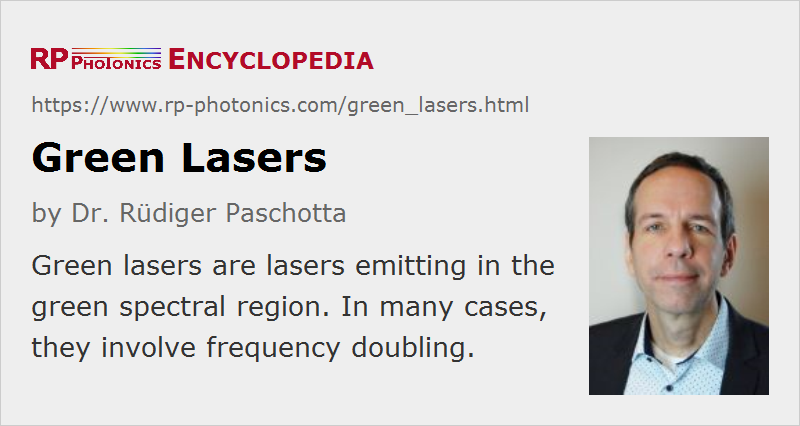
Connect and share this with your network:
Follow our specific LinkedIn pages for more insights and updates: